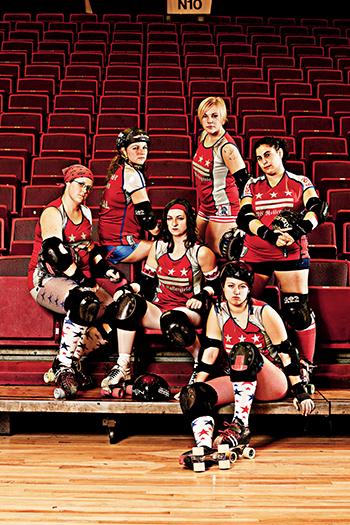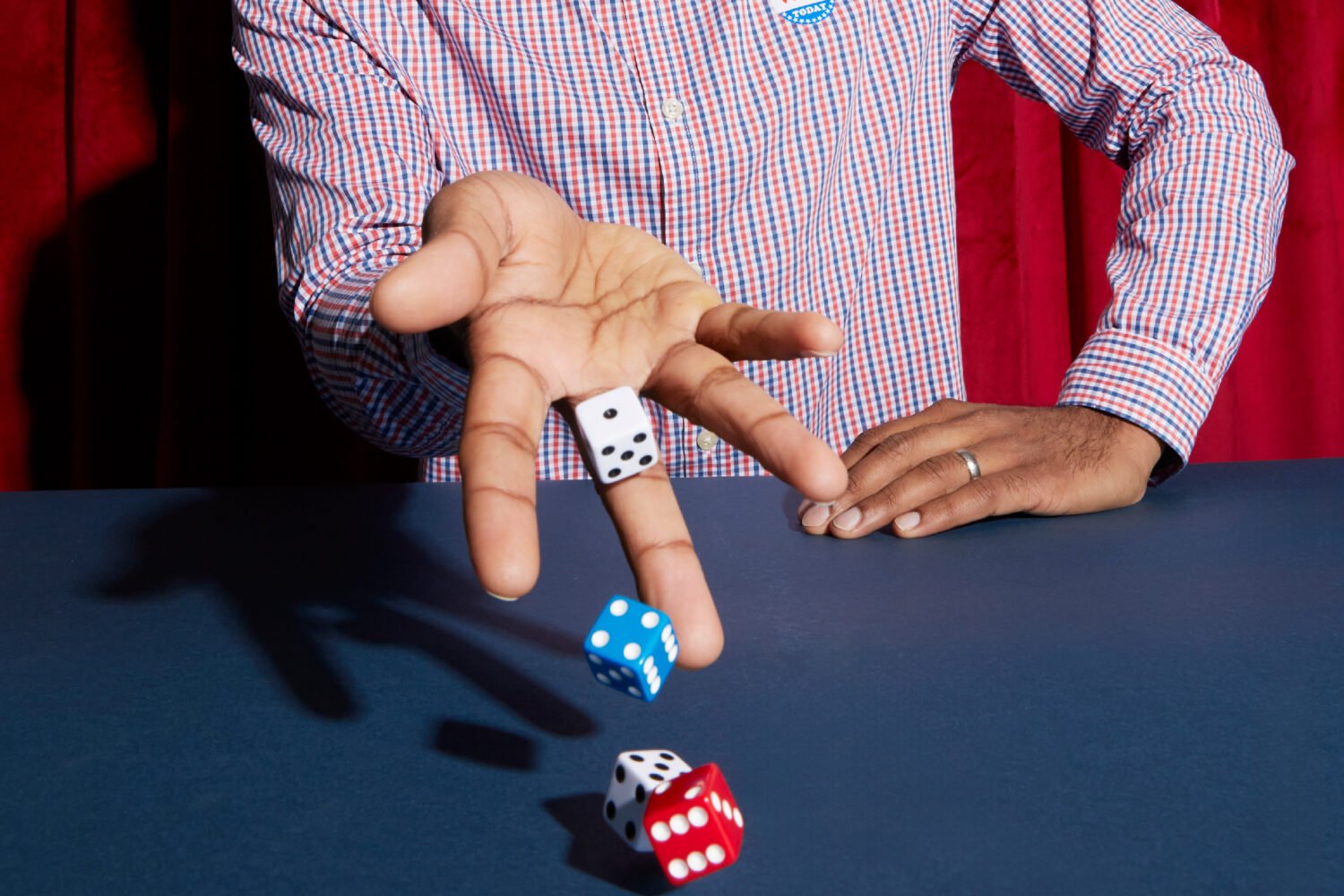
It’s a Tuesday evening at the DC Armory, and dozens of women file in. They peel off conservative blazers and kitten heels and pull on elbow pads, knee-highs, and roller skates.
Camille Morin, pigtails peeking out from under her red helmet, has rock this bitch across her white tank top. The petite 34-year-old wouldn’t seem imposing in the Georgetown furniture showroom she helps manage. To other skaters, though, “Camilla the Hun” is a force to be reckoned with on the roller-derby track.
Morin is captain of the DC Demon Cats, one of three teams in the local roller-derby league, and a member of an all-star team that competes nationally. She and her league mates—women she knows only by nicknames such as Marion Barrycuda, Condoleezza Slice, and Lady Burn Johnson—are here to practice for an upcoming match, or “bout.”
Roller derby is a little like rugby on ice. Women knock their opponents down and weave through the speeding pack with the grace of ballerinas. Each team fights to help its designated “jammer” get through the ten-skater pack. Points are awarded every time the jammer laps one of the other team’s players.
“What I love is the theatrical aspect of it,” Morin says. “Before my addiction to roller derby, I was addicted to karaoke. I was just a mediocre karaoke singer, but I was actually pretty good at roller derby.”
In the three years since the league was formed, derby has become an underground phenomenon, with bouts drawing as many as 2,000 spectators. Last month, after the release of Drew Barrymore’s film Whip It, about a roller-derby team, lots of newcomers signed up.
Morin didn’t know the rules of roller derby until a few years ago, but she did know how to skate. Many rookies don’t. New members face months of training before they’re drafted by a team.
Last February, 26-year-old photographer Annie Lethal-Hits was an official Cherry Blossom Bombshell for one day before she fell and broke her ankle, prompting surgery and a year on the bench. The first time Camille Morin brought her mother to a bout, she was hit hard enough to bring EMTs onto the track.
A player’s first bruise is a badge of honor. Pulled muscles, torn ligaments, and sprains are common. Fishnet stockings, a favorite accessory, create a unique wound—called “rink rash”—when they hit the pavement.
The roller girls in Washington say they’re a little more buttoned down than players in other cities. But the software engineers, military women, working moms, and teachers who make up the group aren’t dull.
Says rookie Dyke Diggler: “This is a group of very smart, very dedicated, seriously badass women.”
Some observers say roller derby’s popularity is evidence of a new feminism, but the roller girls dismiss that. The fact that certain women enjoy smashing into one another should come as no surprise, says Morin’s teammate ShREDica. Men aren’t the only ones who have that aggressive instinct, she says—women just don’t often have the same chance to show it.
Three years after she joined the league, Morin hasn’t lost any of the excitement that comes when she pulls on her jersey and rolls onto the track.
“When you get up for that first jam, there’s a lot of nervous tension,” she says. “But as soon as the whistle blows, it’s game mode.”
This article first appeared in the December 2009 issue of The Washingtonian. For more articles from that issue, click here.


















